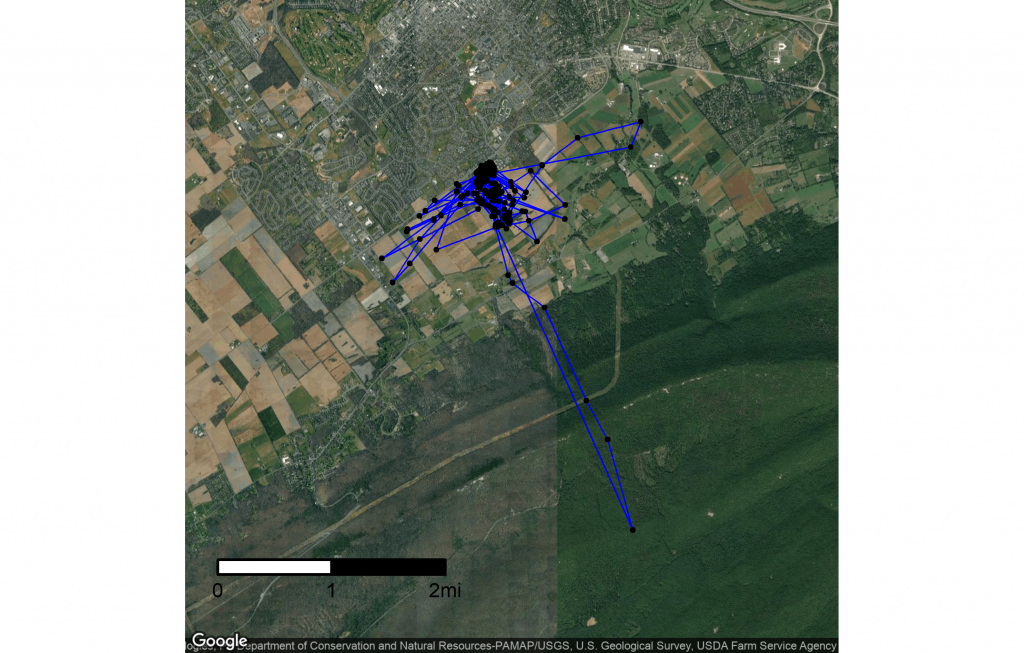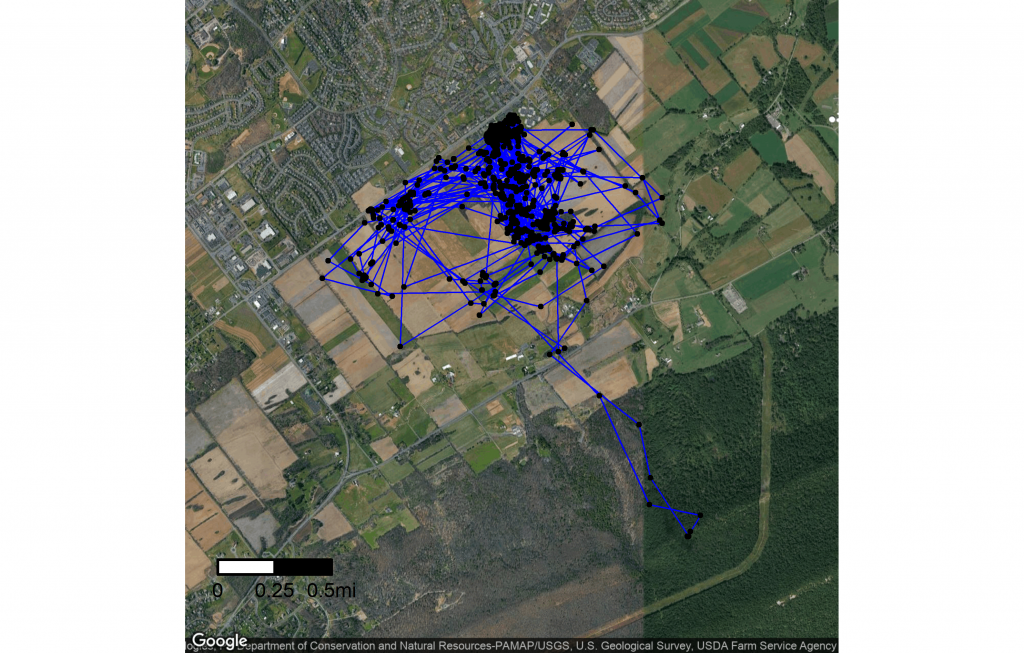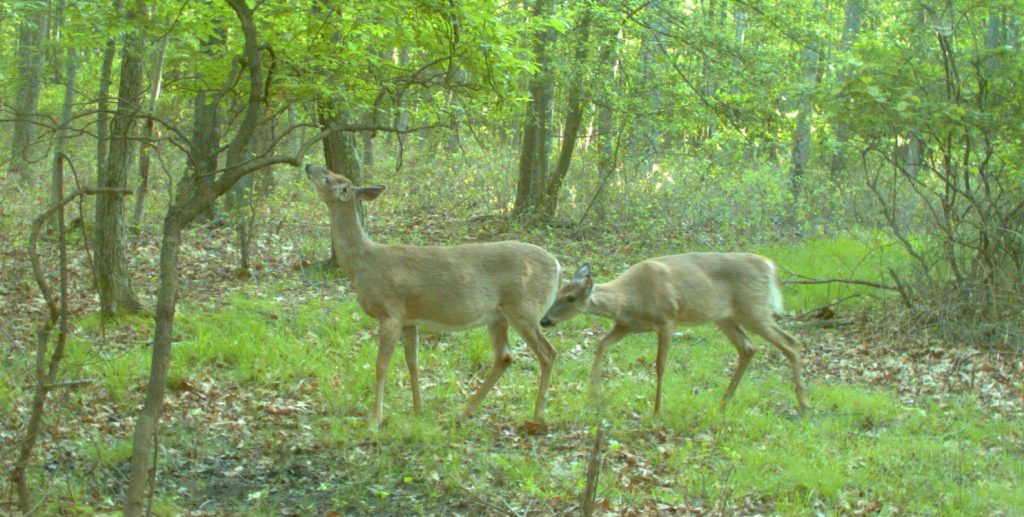When last we left Doe 12866, she had fawned in the little State College woodlot 6+ miles from her established home range. The crew had quite a time locating little Rose, as they called her. The understory was thick and after much searching only one fawn was found. An adult doe having only one fawn is a bit unusual, but we cannot rule out the possibility of another fawn getting the best of the capture crew given the conditions.
When I say “little” Rose, I really mean it. Rose weighed 2.195 kg. That’s less than 5 lbs. A reproductive study done on captive deer showed that does fed a low nutrition diet produced half as many fawns with an average of 1.11 fawns per doe compared to those on a high nutrition diet and their fawns weighed on average 5.7 lbs.
Another study showed that natal body mass varied with doe age. Older does produce larger fawns. And single fawns were significantly heavier than twins.
Was Doe 12866 under nourished? Was she a “young” mother?
On June 18, Rose dies. She is collected for necropsy to determine cause of death. The necropsy was unremarkable. No signs of trauma. Only grassy digesta found in stomach. COD: Abandonment/starvation.
The southern study area had over a third of fawns die from natural causes so this is not anything out of the ordinary. And until Doe 12866 auditioned for The Real Does of the Deer Forest Study, we didn’t think much of this mortality.
But we have movement data for both doe and fawn here. Look at their movements during the last 4 days of Rose’s life. Notice anything?
Doe 12866 never leaves her fawn. The fawn survival study included cool stuff like catloggers to track fawn movements and saliva collection to measure stress by monitoring cortisol (a stress hormone).
Tess found that fawn survival probability decreased as cortisol concentrations increased. Compared to other fawns, Rose had the third highest cortisol level in the study. Given her cortisol level, Rose had a 50% probability of dying.
Retrospectively, Rose’s chances of surviving were slim to none. Very low birth weight coupled with high stress hormone levels tell me this fawn had something else going on beyond what we could see in a standard necropsy.
Doe 12866 was only mom to Rose for 18 days. Did she have another fawn that we just didn’t find on May 30? She stays in State College for the remainder of the summer. A couple of trips to the top of the ridge in July and again on Labor Day weekend maybe for a cookout but she goes right back to her woodlot.


Fall and breeding season are fast approaching. What will Doe 12866 do? Return to the state forest or live the college life?
-Jeannine Fleegle
All Posts in this series:
The Real Does of the Deer Forest Study: The New Norm?
The Real Does of the Deer Forest Study: Pregnant and On the Move
The Real Does of the Deer Forest Study: Maternity Ward
The Real Does of the Deer Forest Study: Love and Loss
The Real Does of the Deer Forest Study: Holiday Drama and Life Lessons
